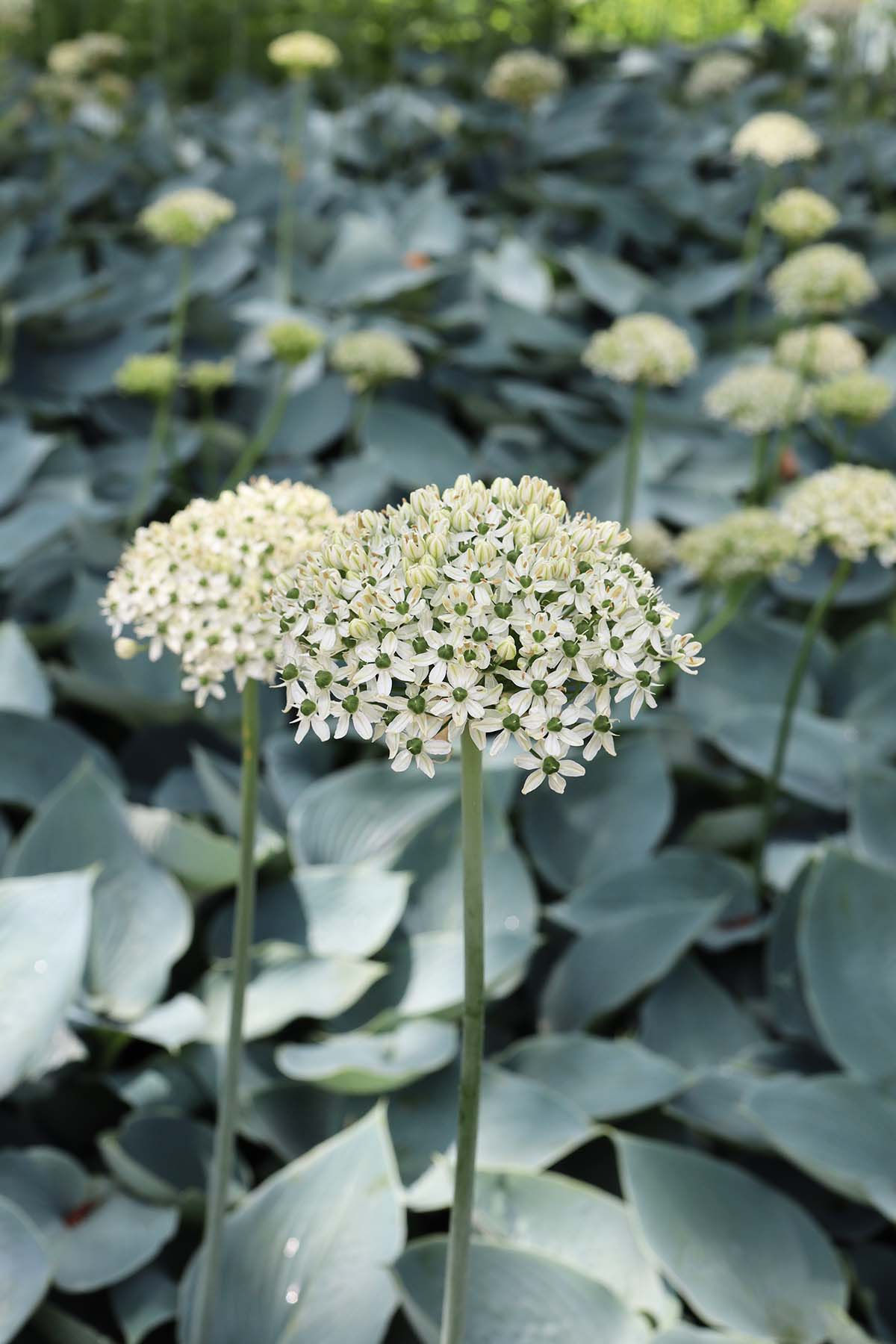The Garden Decoder: What Is Green Mulch?

Green mulch is most definitely not just traditional wood mulch dyed green.
Photograph by Marie Viljoen, from New York’s Battery Conservancy Gardens by Piet Oudolf.
What is green mulch?
Tall white Allium nigrum in bloom above a carpet of hostas acting like mulch. While there are several answers to this question, Benjamin shares this succinct definition, “Green mulch is using plants to do the work of wood mulch, and it can simply be lots of plants, dense layers, and compatible plant communities tightly woven together.”
By using plants as the covering, you are helping to cool the soil, reduce runoff, and prevent hostile weed takeovers—essentially offering the same benefits as traditional mulch.
What are the benefits of using green mulch?
What are some good green mulches to use?
European Meadow Sedge (Carex remota) provides a durable groundcover-cum-mulch despite its fine-textured appearance.
Photograph courtesy of Greenlee and Associates, from Gardening 101: Carex.
Benjamin tells me that his favorite candidates are: Carex albicans, Carex rosea, Carex sprengelii, Carex blanda, Carex vulpinoidea, Bouteloua gracilis, Bouteloua curtipendula.
And many are far more adaptable than we give them credit for.” Benjamin also shares that the lower height of sedges and grasses allows flowers to penetrate the green mulch at different layers.
Photograph by Amanda Slater via Flickr.
So, flowers can be green much?
A border of geraniums edges a garden bed.
While there are endless flowering ground covers to use as green mulch, for example or Callirhoe involucrata, Benjamin encourages the use of planting what is endemic to a person’s eco region and best suited to the local climate and wildlife.